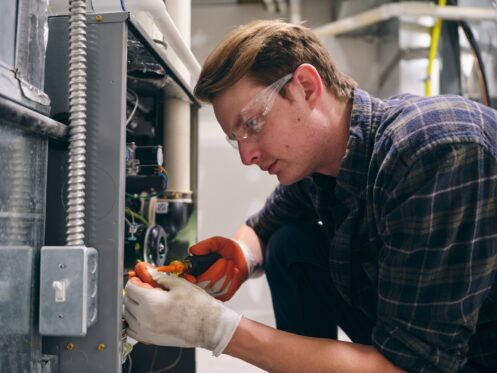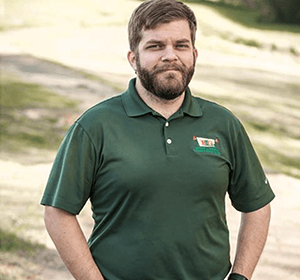A furnace failure can be a major problem when cold weather hits. You rely on your furnace to keep you and your family comfortable and warm during the winter months, but an unreliable furnace means you won’t enjoy peace of mind that you can count on your heating system. You can take proactive steps before your furnace breaks down by recognizing the signs it is going bad. Here are nine signs from our professional HVAC technicians at Bobby L. Greene Plumbing, Heating & Cooling Co. in Shreveport, LA that might indicate your furnace is failing.
Signs of Impending Furnace Failure
Knowing the signs of a failing furnace can help you get repairs or replace your unit before the colder months arrive. If you notice any of the following signs, it’s time to call an expert HVAC technician.
- Older furnace
- Spikes in utility bills
- Frequent illnesses
- Unusual noises
- Inadequate heating
Below is an explanation of these signs and what they might indicate about your furnace.
1. Older Furnace
Unfortunately, furnaces don’t last forever. Most furnaces last 15 to 20 years, especially if you keep up with yearly maintenance visits. However, as your furnace ages, its parts will wear out, and the unit will break down more frequently. If you know your furnace is older but are unsure of its age, you can check the label information attached to the unit. If you don’t see that information, look up your furnace model online to see if you can find information from the manufacturer. Even if your unit still works but is approaching the end of its expected lifetime, it might may be a good idea to consider replacing it.
Investing in a modern, energy-efficient furnace can dramatically reduce your utility costs while providing consistent and reliable heating. Additionally, many newer models come with advanced features, such as smart thermostats and variable-speed blowers, that further enhance energy efficiency and comfort in your home. Consider a condensing furnace if you decide to move ahead with a replacement.
A condensing furnace captures and recycles heat that would otherwise be lost through exhaust in a traditional furnace. By utilizing a second heat exchanger to extract additional heat from the exhaust gases, these furnaces operate at a much higher efficiency rate, often reaching over 90% AFUE (Annual Fuel Utilization Efficiency). This means more of the fuel is converted to heat, making it an excellent option for homeowners seeking long-term savings and enhanced energy performance.
2. Spikes in Utility Bills
Older furnaces are generally much less efficient than modern units. As they age, your furnace will work harder to heat your home and may run more frequently. While a frequently running furnace consumes more energy, it doesn’t necessarily produce additional heat, leading to higher utility bills.
Preventive maintenance can help extend your furnace’s lifespan and save you money. However, the effectiveness of tune-ups and minor repairs diminishes once your furnace reaches 15 years old. At this stage, the costs associated with running an inefficient furnace and the need for expensive repairs can surpass the cost of replacement.
You may have noticed that your energy bills have become considerably higher than they used to be. Our HVAC technicians can inspect your unit and provide guidance on whether it might be time for a replacement.
3. Frequent illnesses
If you or your family members are experiencing frequent respiratory issues or flu-like symptoms, it may indicate a serious problem with your furnace. These health issues can arise from poor ventilation of exhaust gases or even carbon monoxide leaks from a faulty heat exchanger.
Carbon monoxide is a colorless, odorless gas that can accumulate in your home, posing significant health risks. Exposure can lead to illness, and at dangerously high concentrations, it can be fatal. If you suspect a problem, having your furnace inspected immediately is crucial to ensure your home is safe and your family’s health is protected.
A cracked heat exchanger is one of the most common issues associated with older furnaces and can lead to dangerous carbon monoxide leaks. This critical component transfers heat from the combustion chamber to your home while ensuring that harmful gases are safely contained and vented outside. Unfortunately, heat exchangers are often irreparable and can be costly to replace. Because of this, most manufacturers provide a warranty for heat exchangers that lasts for the expected lifetime of the furnace. In most cases, if your furnace’s warranty has expired, upgrading to a new heating system makes more financial sense than replacing your older furnace’s heat exchanger.
4. Unusual noises
Some issues that cause unusual noises in your furnace can be resolved if caught early. For instance, a rattling sound may indicate loose components, such as screws or panels, which a technician can easily tighten or secure. Similarly, a squealing noise often points to worn fan belts or bearings, which can be replaced to restore smooth operation. Addressing these minor issues can prevent further damage.
However, certain sounds may signal that your furnace needs to be replaced rather than repaired. For example, persistent banging or clanking noises could indicate a malfunctioning blower motor or a failing ignition system. These issues can lead to inefficient heating and may compromise the safety of your system. In such cases, a professional technician may recommend replacement, as repairing these components can be costly and might not guarantee a long-term solution.
5. Uneven heating
If your furnace is unable to maintain a consistent temperature throughout your home, it’s time to call for service. A properly functioning and appropriately sized furnace should provide even heating in all areas.
If you notice cold spots, several issues may be at play. For instance, blocked or closed air vents can restrict airflow through your system, leading to uneven heating. You can solve this issue by moving household items, such as area rugs and furniture, away from your vents and ensuring they are all fully open. On the other hand, a malfunctioning thermostat may fail to gauge the temperature accurately. This may result in your home being colder than the temperature you set on your device. A technician can recalibrate your thermostat to ensure it functions correctly.
However, if your furnace no longer adequately heats your home, it may be a sign that it needs to be replaced. Issues such as a failing heat exchanger or a deteriorating blower motor can lead to significant drops in heating efficiency. These problems often indicate that the furnace is nearing the end of its lifespan and are typically beyond repair. In such cases, a professional technician will recommend replacement.
Call Our Experienced HVAC Professionals
Signs that your furnace is wearing out or failing might mean it’s time to consider replacing it. It’s important to talk to trusted HVAC professionals like the technicians at Bobby L. Greene Plumbing, Heating & Cooling Co. for honest and dependable advice and service. We have been serving the residents of Shreveport, LA and the surrounding areas for more than six decades. We install, maintain, and repair heating and cooling systems. In addition, we can help with all your plumbing needs, including repiping, leak detection, and sewer replacement. Contact us today to schedule an appointment with one of our knowledgeable and skilled team members.

